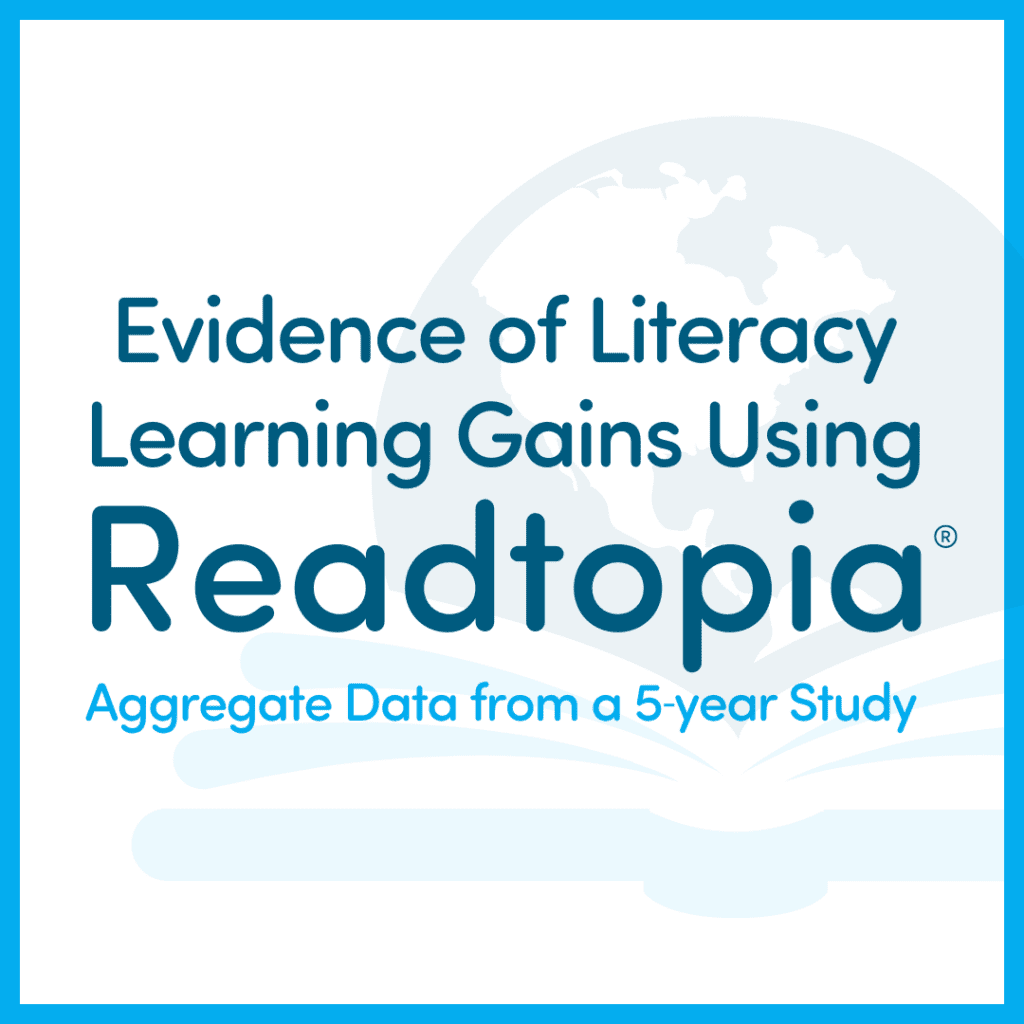Evidence of Impact:
Comprehensive Literacy Instruction
on Learners with Complex Needs
Insights from an ongoing 5-year study on the impact of implementing comprehensive literacy instruction in special education classrooms.
Literacy Instruction for Emergent Learners
Lisa Erwin-Davidson, Ph.D, CCC-SLP, was a speech-language pathologist for nearly 30 years before entering academia, first at the University of North Carolina at Chapel Hill and now at California State University, Fullerton (CSUF). As an assistant professor in the department of Communication Sciences and Disorders, Erwin-Davidson researches the intersection of literacy learning and disabilities.
In a webinar hosted by Building Wings, Erwin-Davidson presented initial findings from her current research project in which a comprehensive literacy instruction curriculum is implemented with the intent to improve students’ language and literacy learning outcomes. While the project is still ongoing, Erwin-Davidson’s preliminary insights can help educators better understand and apply literacy instruction for emergent learners.
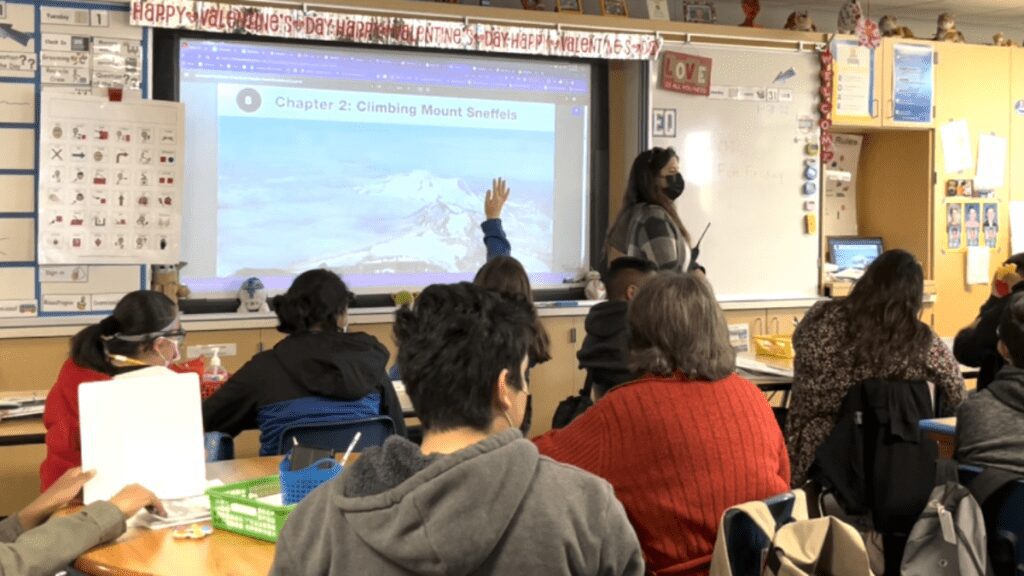
Studying the Effects of Literacy Curriculum Intervention
Erwin-Davidson’s research includes classrooms in a large urban school district ranging from upper elementary to high school to help her team better examine and evaluate the effects of literacy curriculum intervention “with the goal of improving the reading and writing outcomes for students enrolled in special education classrooms” and to measure and track student progress over time. She initially began the study with six middle and high school classrooms and is now following student results in 26 classrooms. The project has involved the work of nearly 40 research assistants from CSUF, 13 classroom teachers, 9 speech-language pathologists, 26 instructional assistants, and 100-125 students who are beginning communicators and literacy learners.
Erwin-Davidson set out to understand how the evidence-based curriculum, Readtopia, impacts the literacy outcomes of students with complex learning needs. Her findings support the science behind Readtopia’s curriculum, showing that students do make measurable literacy learning gains. She also presented data of a classroom that did not utilize this curriculum that did not make these gains.
The Findings: A Comprehensive Literacy Curriculum, A Shared Vocabulary, and the Language of Learning is now in its third year. The study is yielding informative results that educators can apply in their classrooms to support literacy development. Some findings that Erwin-Davidson shared include:
Qualitative Findings
- When students and teachers were using universal core words, there were increased opportunities for interaction because students were operating with a shared vocabulary. The Readtopia vocabulary words were also part of that shared language. Teachers found it was most effective to slow their pace of instruction, talk less, and allow for longer wait times.
- With increased opportunities for shared learning due to a common vocabulary, there was a decrease in barriers to co-constructed language learning.
- Students benefited from increased opportunities to associate spoken words with visual representations (either graphic symbols or printed words.)
- During the study one teacher shared she was “able to trade in her running shoes.” Before using Readtopia she felt she was running from student to student but now had a more effective way to teach learners at different reading levels within the same classroom. This teacher reported that students were engaged with the materials and had greater opportunities to integrate what they were learning with other team members such as art and speech.
- One of the most successful classrooms used a co-treatment model with an SLP. This is illustrated in the graphic below with the teacher providing instruction at the front of the classroom, and with an SLP providing aided language input. The image below and other images on this page were part of Irwin-Davidson’s webinar.
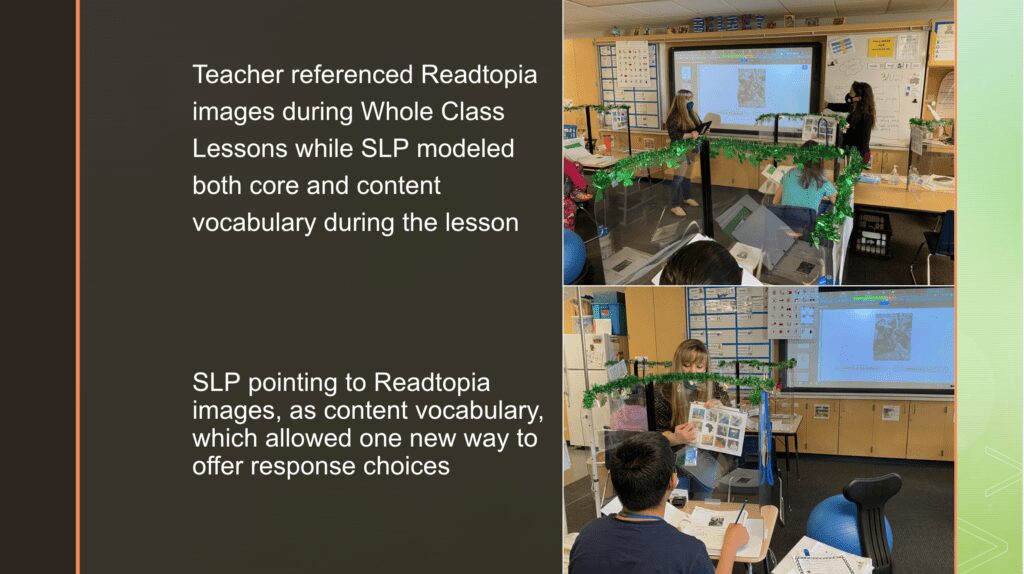
- The importance of displaying both core and content vocabulary helped the students develop a concept of the printed word, and also how a graphic symbol of the word is used for communication.
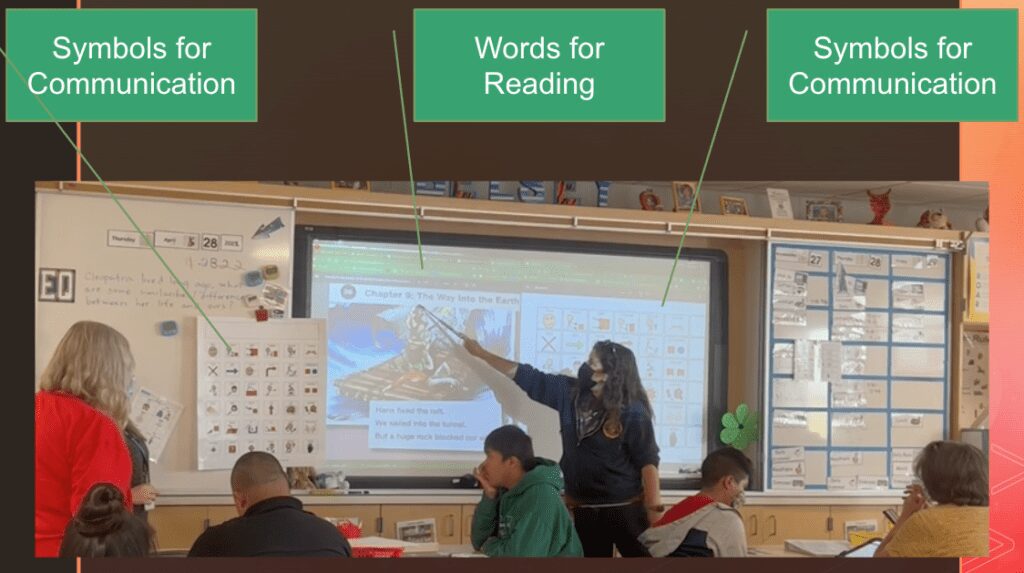
Quantitative Findings
- In a high school classroom in the study’s first year, there was a 10-fold increase in the total number of weekly minutes spent on explicit literacy instruction (from 30 minutes/week to 300 minutes/week, with two Readtopia lessons daily).
- When one middle school classroom was compared to another that hadn’t implemented the Readtopia curriculum, researchers found that students in the classroom without Readtopia had, on average, stayed at the same literacy level for the entire school year, while students in the classroom with Readtopia showed faster literacy gains.
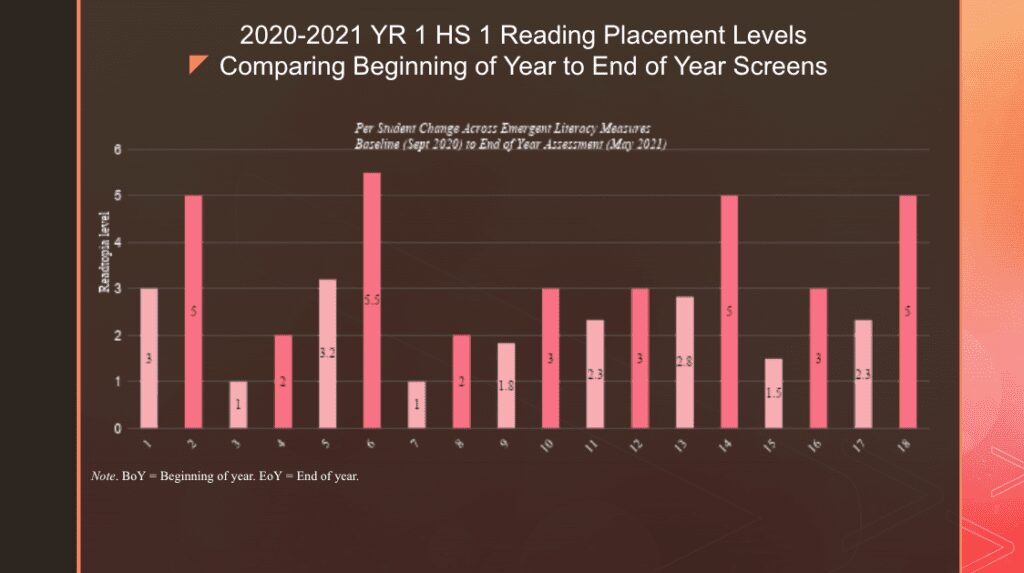
- Irwin-Davidson shared many examples of literacy gains being made in classrooms using a comprehensive literacy approach including a high school classroom of nine students ages 15-18. The above chart depicts reading placement levels of these students at the beginning of the year (in pink) compared to the end of the year (in red). Students initially placed between an Emergent Level levels 1 and Early Transitional Level 3. By the end of the year, these students tested at significantly higher levels including three students in Early Conventional Level 5.
- In the classrooms using Readtopia, more than 100 students have become literate thus far.
Comprehensive Literacy Instruction Takeaways for Special Educators
Careful analysis of all qualitative and quantitative findings helped Erwin-Davidson and her peers identify some key takeaways at this midpoint of the study:
- The physical arrangement of the classroom matters. Classroom boards need to be big, and students need access to a screen at their desks.
- Spoken and written communication needs to be possible for students at all times.
- Teachers must point to the symbols/words they are using as they teach to synthesize connections for students.
- Images should be shown in different colors and fonts–whatever is most engaging and accessible for students.
- Educators need to ensure that they are delivering a comprehensive literacy curriculum with a shared, accessible vocabulary. To do that, teachers need to be taught how to teach students useful words for combining into the language of daily learning. The Readtopia curriculum was used as it is a comprehensive curriculum that provides explicit instructional prompts for teachers and has units with leveled instructional materials and graphic novels that are age-appropriate for older students.
While Erwin-Davidson’s research is ongoing, her findings thus far show that the comprehensive components and practical implementation methods within the Readtopia reading curriculum including dedicated time in the classroom to learn literacy, set students on the path to success.
To learn more about bringing Readtopia to your school or district, please contact us.


